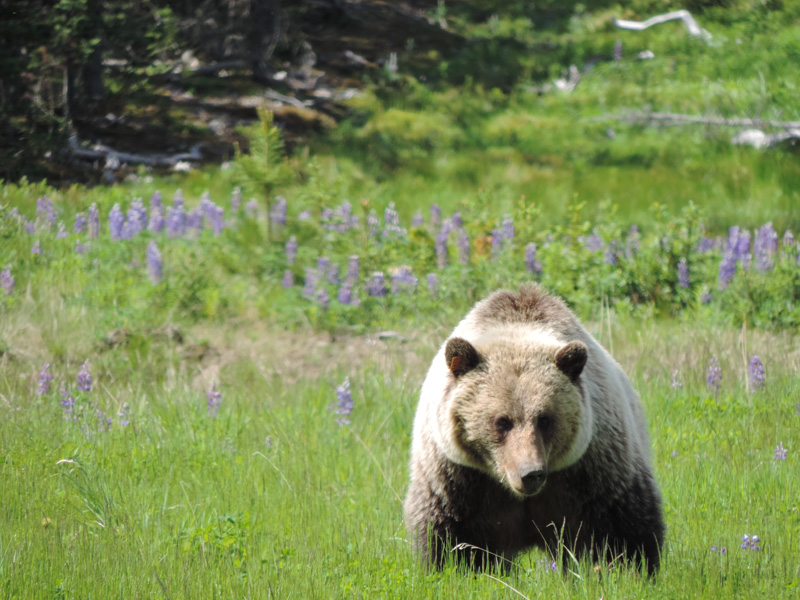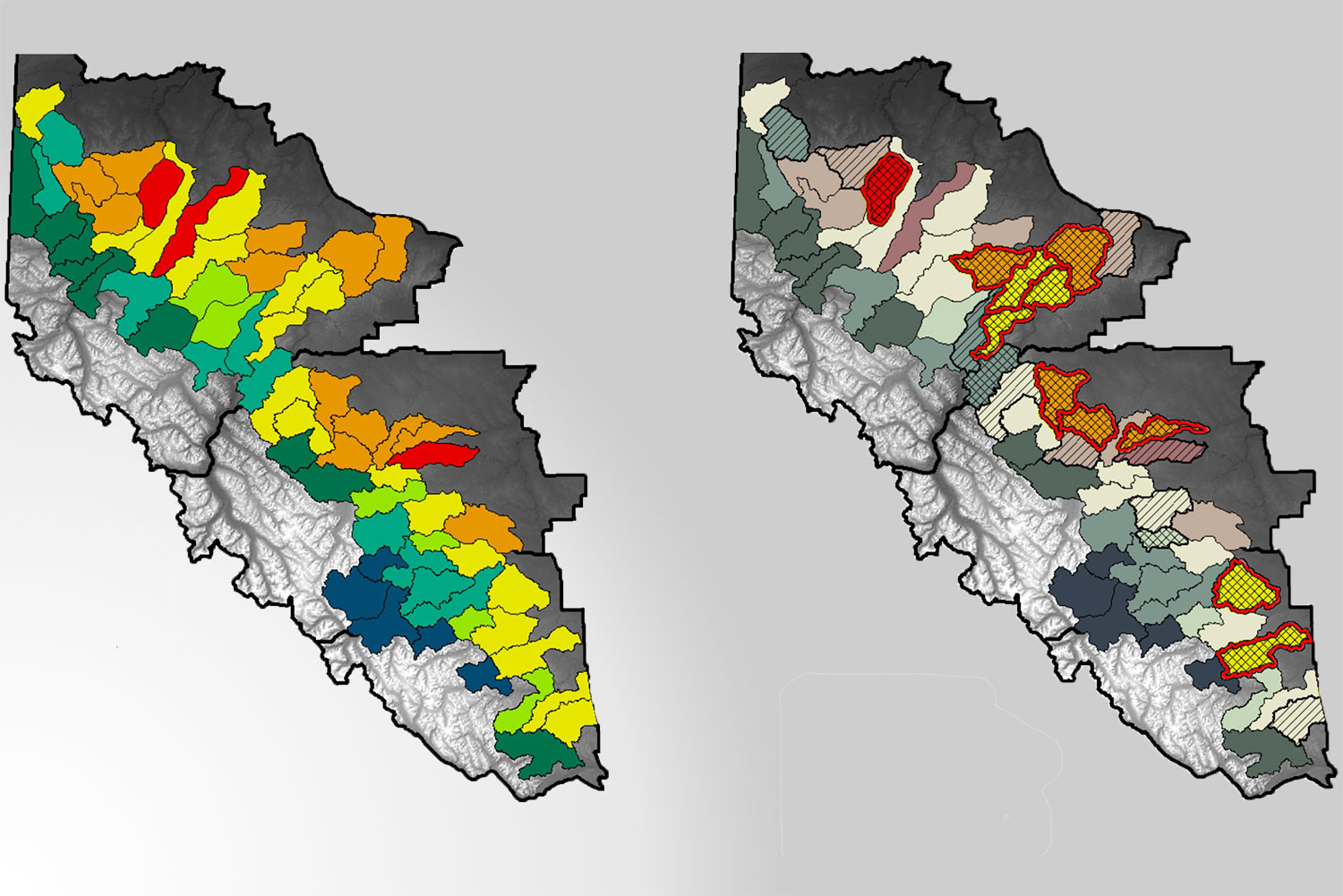
Article published in the Journal of Nature Conservation. Citation and abstract only.
Abstract
Successful recovery and management of threatened and endangered species requires an understanding of the capacity of the available habitat to support the species. Measuring habitat supply, or specific elements of that habitat, has been a key objective and challenge in wildlife management, especially for wide-ranging omnivorous species. In this study, we provide a framework for estimating the carrying capacity of a threatened grizzly bear population in Alberta, Canada. Specifically, we compare current patterns in abundance from recent population inventories to potential abundance from our habitat-based estimates of carrying capacity to determine where conservation actions would be most effective in recovery. To estimate carrying capacity, we used field data from 2001 to 2016 to measure abundance of vegetation, insects (ants), and ungulates. We predicted spatial patterns in abundance and biomass from these field data using generalized linear models and combined these into one of five categories used by bears: roots, fruits, herbs, ants, and ungulates. Models were then converted to digestible energy (kilocalorie content) and summarized for individual watersheds. We then used a protected population of grizzly bears (i.e., a reference area) to calculate kilocalorie relationships per bear, and from that potential carrying capacities for watersheds using two methods. First, we considered the ‘full resource’ approach using kilocalories of all key food items. Second, we simplified it to only fruit and meat resources, for which data are more widely available and known to correlate locally with grizzly bear density. Despite differences between the two approaches, density (bears per 1000 km2) estimates for carrying capacity were similar across most of the region for the two scenarios suggesting one can may be able to just use fruit and meat resources and thus other food items may not limit bear populations. Finally, we identified watersheds where differences between current bear densities and carrying capacity was large and road densities high (risk of bear mortality), and thus where management efforts are most needed. This study provides a comprehensive framework for estimating carrying capacity and demonstrates how these findings can be applied to support grizzly bear management and population recovery efforts.
Access the full paper here. (with subscription)
Citation
McClelland, C. J. R., Denny, C. K., Larsen, T. A., Stenhouse, G. B., & Nielsen, S. E. (2021). Landscape estimates of carrying capacity for grizzly bears using nutritional energy supply for management and conservation planning. Journal of Nature Conservation 62:126018. doi:10.1016/j.jnc.2021.126018







